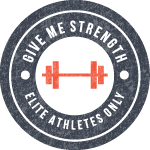The data from the biomechanical assessment and any performance testing undertaken provides direction to the training and a benchmark for progression. It gives the coach a clear understanding of where the individual is right now and where they ideally need to be.
Whether it’s about simply monitoring bodyfat percentages, preparing for an event, getting fitter, stronger or rehabilitating from injury, the data can be monitored over the days, weeks, months and years to reflect upon during the training process.
Performance testing data can also be presented to compare an individual to any club squad data (if available) or other individuals within a group.
Physical characteristics (example): Subject vs. squad (mean ± SD)
Below is an example of how group data is presented to an individual.
| Measure | Subject | Squad |
|---|---|---|
| Age (years) | 28 | 22 ± 5.4 |
| Height (cm) | 187 | 183 ± 6.0 |
| Body mass (kg) | 101 | 81.6 ± 8.4 |
| Sum of skinfolds (mm) | 24.6 | 27.1 ± 6.9 |
Field-based testing (example): Subject vs. squad (mean ± SD).
Below is an example of how an individual’s data is compared to the squad average.
| Test | Subject | Squad | Rank |
|---|---|---|---|
| 10m sprint (s) | 1.77 | 1.81 ± 0.6 | 4 |
| 20m sprint (s) | 2.99 | 3.01 ± 0.1 | 7 |
| Jump (cm) | 56 | 57.4 ± 5.9 | 10 |
| YIRT (L2): Stage no. | 19 | 20 ± 4.4 | 7 |
| Est. VO2max: (mL. kg-1. min -1 ) | 56 | 57 ± 5.1 | 7 |
| RST (12 x 20 m): total time (s) | 37.3 | 38 ± 0.8 | 6 |
| Fatigue Index (%) | 5.1 | 5.2 ± 0.8 | 7 |
| Arrowhead Agility (s) | 16.08 | 16.59 ± 0.6 | 4 |
Range of motion testing (example): Subject vs. ideal
| Test | Subject | Ideal |
|---|---|---|
| Lumbar curve | 11 | 30 – 35 |
| Thoracic curve | 56 | 30 – 35 |
| Lumbar flexion | 28 | 40 – 60 |
| Lumbar extension | 15 | 20 – 35 |
| Side bend (cm) | 21/16 | Within 2cm |
| External hip rotation | 23/41 | 40 – 60 |
| Internal hip rotation | 35 | 30 – 40 |
| Prone knee bend | 118 | 135 |
| Knee extension hip at 90° | 145 | 170 – 180 |
| Ankle: knee to wall (cm) | 6/4 | >9 |
